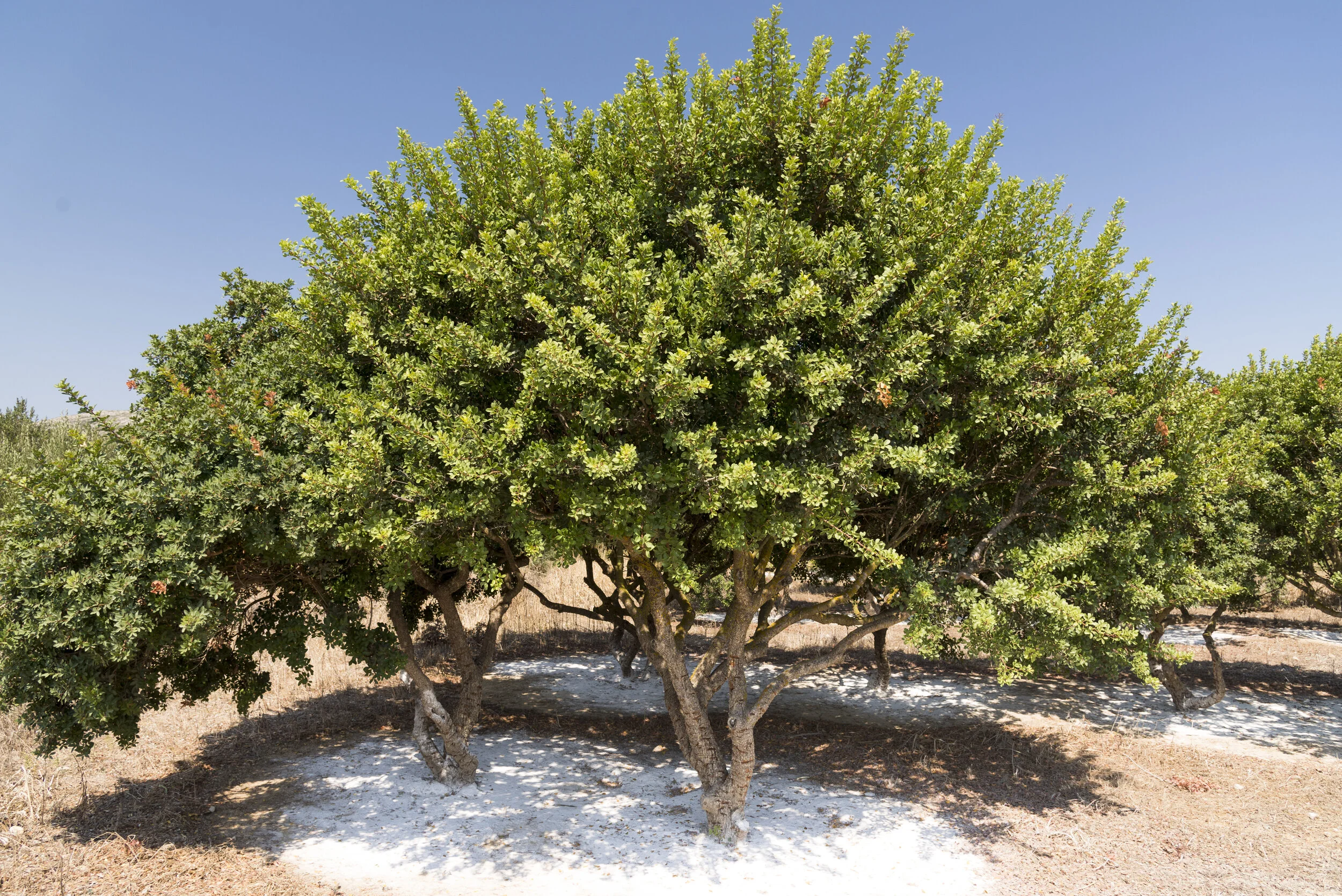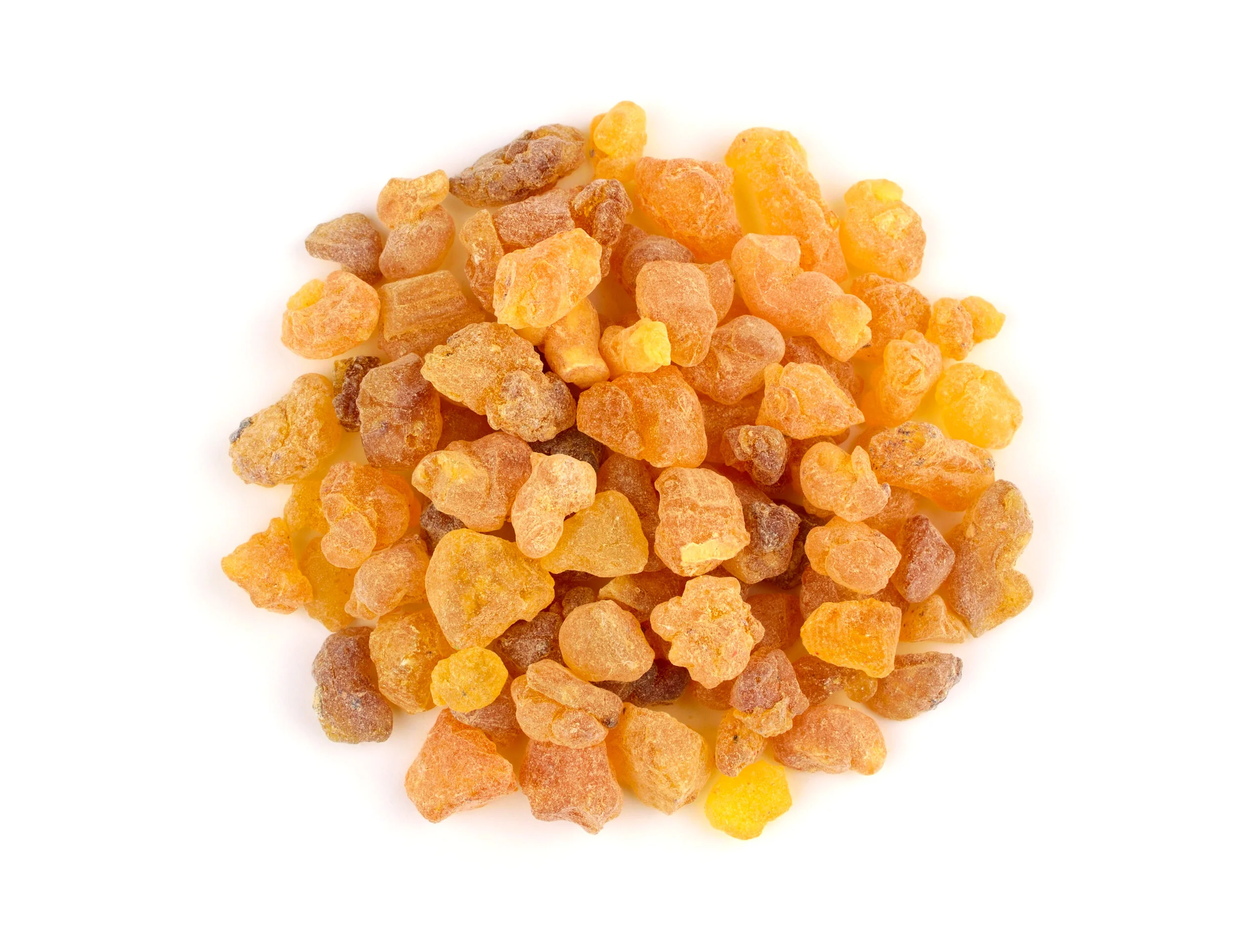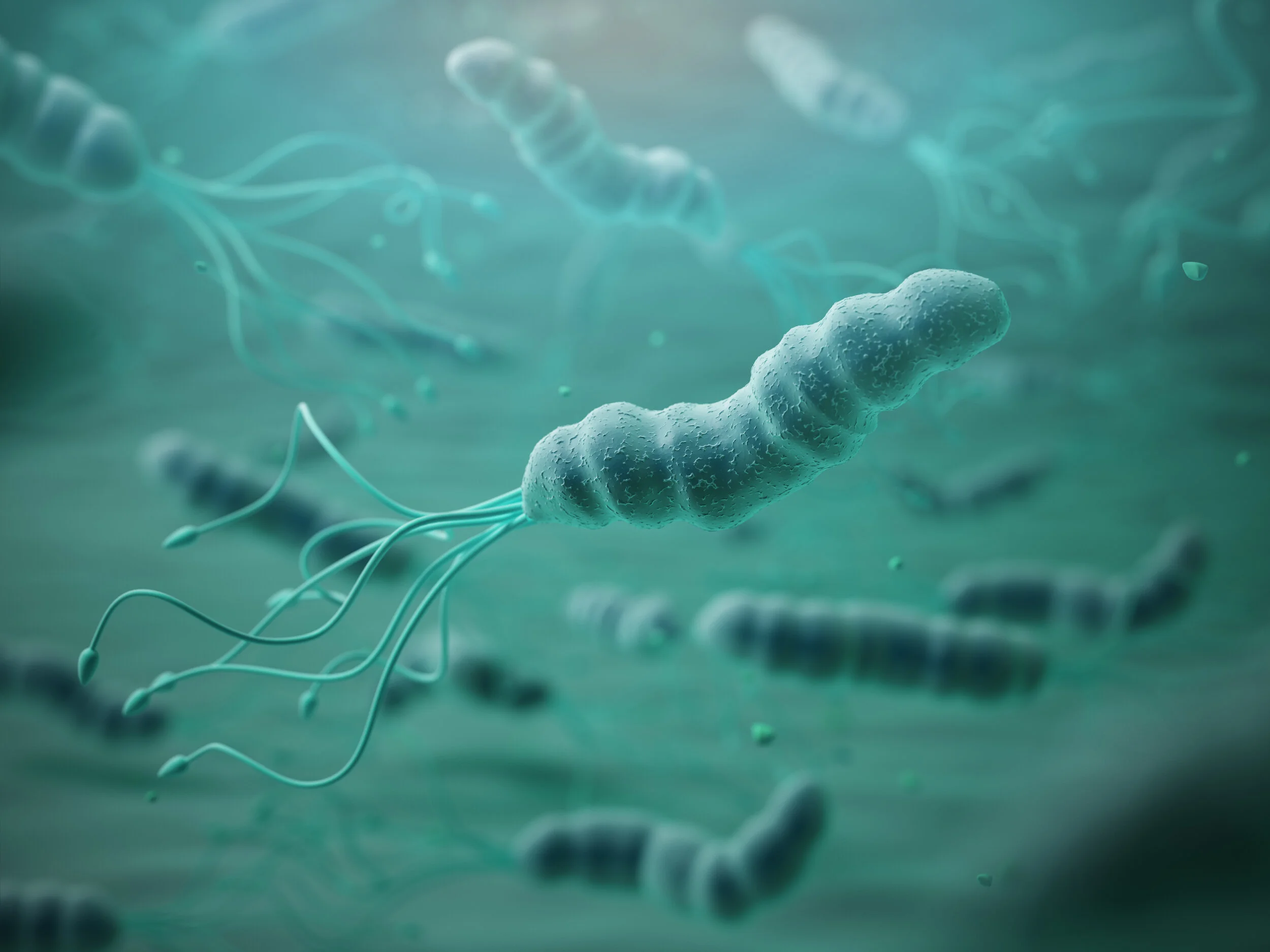ChiosMastiha (Mastic gum)
Sue McGarrigle ND
Chios Mastiha (Mastic gum) is the aromatic plant resin of the lentisc tree (Pistacia lentiscus var.chia). The resin is also known as the ‘Tears of Chios’, as the bark is slit, the resin trickles out slowly creating crystal-like tears, and is used as a food ingredient in the Mediterranean region. The ancient physicians were well acquainted with resins using them in medicine, topically and as incense while the Greeks have used the Mastic resin as a natural chewing gum for centuries. Although lentisc trees grow wild throughout the Mediterranean, the Greek island Chios is the only place where they are systematically cultivated to produce Mastic gum. This is due to the uniqueness of this region owing to its microclimate, eugenics and
good management over several centuries by the ancient Chians. Within the European Union, Mastic production in Chios is granted protected designation of origin certification. The island's Mastic production is controlled by a co-operative of medieval villages, collectively known as the 'Mastichochoria', which is also located in southern Chios. From ancient times until today, little has changed in the Mastic production process, which unbreakably connects it to the historical tradition of this area.
The word mastic is a synonym for gum in many languages and is derived from the Greek verb, ‘to gnash the teeth’, which is the source of the English word, masticate. Chewing the gum is important and studies have indicated that processing Mastic by removing the sticky, insoluble polymer poly-β-myrcene (gum) makes the active components, particularly its essential oil more available and effective. In practice I have found that many people are not aware of Chios Mastic or of its extended benefits as a food. More recently modern scientific research has justified the beneficial action of this ancient medicine to gastric diseases, by revealing its in vivo and in vitro activity against Helicobacter pylori. Furthermore, studies of the antimicrobial, antifungal, antioxidant, hypolipidemic, anti-inflammatory and anticancer activities of Mastic have characterised it as a wide-range therapeutic agent.
Composition The chemical composition of the gum consists of the polymeric (mainly β-polymyrcene), neutral and acidic fractions of the extracts, as well as its essential oil. The neutral fraction affords 5 neutral triterpenic derivatives while the acidic fraction contains mainly triterpenoid acids identified as their methyl esters. The oil contains 62 constituents, 61 of which have been identified. The main components are α-pinene (58.86–77.10%), camphene (0.75–1.04%), β-pinene (1.26–2.46%), myrcene (0.23–12.27%), linalool (0.45–3.71%), and β-caryophyllene (0.70–1.47%).
These six components total more than 90% of the oil. Several trace components that appear to contribute significantly to the antibacterial activity of mastic oil have been identified: verbenone, alpha-terpineol, and linalool. The sensitivity to these compounds was different for different bacteria tested (Escherichia coli, Staphylococcus aureus and Bacillus subtilis), which suggests that the antibacterial efficacy of mastic oil is due to a number of its components working synergistically rather than to a single component.
Crohn’s disease Clinical studies have emphasised the anti-inflammatory activity of Chios Mastic. This biological activity can be attributed to a variety of its compounds. Inflammation is strongly associated with oxidative stress induced by TNF-α and angiotensin II. Pro-inflammatory cytokine TNF-α stimulates superoxide production by NADPH oxidases which provides feed-forward activation of inflammatory pathways. Mastic inhibited superoxide production induced by both TNF-α and angiotensin II. A study published in the February 7, 2007 issue of the "World Journal of Gastroenterology" researched the efficacy of Mastic supplements on people with mild to moderately active Crohn's disease; Mastic significantly decreased the activity index and the plasma levels of two inflammatory markers Interleukin 6 (IL-6) and C-reactive protein (CRP) in patients with mildly to moderately active Crohns disease after taking Mastic for four weeks.
Helicobacter pylori Helicobacter pylori is a spiral shaped bacterium which uniquely colonises the stomach and the first part of the duodenum and it has co-existed within humans for thousands of years. More than 50% of the world's population harbour H. pylori in their upper gastrointestinal tract with infection more prevalent in developing countries. However, over 80 percent of individuals with it are asymptomatic and it has been suggested that it plays an important role in the natural stomach ecology. Within its niche H.Pylori can evoke pro-inflammatory signals which modulate a variety of functions locally and systemically and like other bacteria found in humans can be commensal - meaning it enjoys a symbiotic and beneficial relationship with us as its host. However responses may become more aggressive when infection takes hold due to particular strains of H.pylori and these in turn may cause substantial and ongoing immune and inflammatory responses.
H.pylori is linked to gastric atrophy, gastric adenocarcinoma, and mucosa-associated lymphoid tissue lymphoma. Antibiotic eradication schemes have proved very effective in clearing H.pylori infections; however, low patient compliance, side effects of multiple drug therapy and the development of antibiotic resistance have created the need for new eradication. A Nottingham University study found that Mastic gum is active against H.pylori and in assessing its antibacterial properties Mastic killed seven strains of H.pylori irrespective of the organism's level of susceptibility to nitroimidazoles. Mastic induces a structural change that prevents its survival. Even at lower concentrations, Mastic still inhibited bacterial growth significantly, its effectiveness equal to antibiotics. A 2007 animal study demonstrated that a Mastic gum extract without the polymer constituent poly-β-myrcene was effective in reducing H.pylori colonisation levels (11 strains) and that the activity could be attributed to triterpenic acids within the acid fraction of Mastic extracts. Further human studies were published in the March 2010 issue of "Phytomedicine" where the positive effects of Mastic on people with H.pylori infection were evaluated.
Ulcers H. pylori infection is implicated in the development of gastrointestinal inflammation (gastritis) and gastric and duodenal ulcers. Clinically, Mastic has been effective in the treatment of ulcers. In several studies using Mastic on ulcer patients, the original site of the ulcer caused by H.pylori infection was completely replaced by healthy epithelial cells. Mastic powder produced a significant reduction in the intensity of gastric mucosal damage induced by many of the drugs used to treat ulcer pains such as aspirin, phenylbutazone and resperine. It was also found to significantly reduce acidity and to protect tissue against alcohol (ethanol) damage as well as helping to reduce heartburn.
Cardiovascular and Liver protection Mastic gum has been associated with health benefits for the cardiovascular system and the liver. It inhibits human LDL oxidation and acts on peripheral blood mononuclear cells to elicit an antiatherogenic effect which is likely to be associated with its antioxidant properties. In a study published in the April 20, 2007 issue of the "Journal of Ethnopharmacology." a human group ingesting Chios Mastic powder exhibited a decrease in serum total cholesterol, LDL, total cholesterol/HDL ratio, lipoprotein (a), apolipoprotein A-1, apolipoprotein B, SGOT, SGPT and gamma-GT levels demonstrating its hepatoprotective and cardioprotective role. There is extensive literature, going back many centuries, regarding Mastic gum’s use for a variety of gastrointestinal ailments. In recent years, laboratory experiments and clinical trials have shown conclusively Mastic gum’s ability to modulate H. pylori, as well as its other benefits demonstrating its future use as a potential complementary botanical option.







